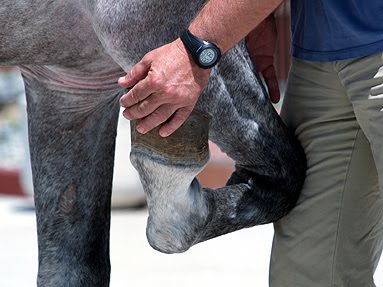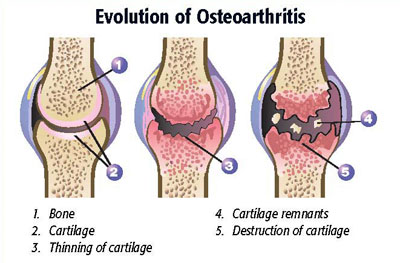Hyaluronan is another substance used for the treatment and control of joint inflammation in the horse. It is a polysaccharide, a long sugar chain, and is naturally occurring substance in the horse’s body found in particularly high
concentrations in joints, tendon sheaths and the eye. In joints, naturally occurring hyaluronan is mostly thought to function as a “boundary” lubricant, acting as lubricant at the boundary between the soft tissue of the joint and the joint cartilage as the joint bends and moves.
Theoretically, synthetic forms of hyaluronan have a number of beneficial effects for joints. Most obviously, joint lubrication is immediately improved after IA injection of hyaluronic acid. However, HA that’s injected into a joint is also removed within about 24 hours, so it does not have a long duration of direct action. Hyaluronan acid is also fairly large molecule. Because of its size, it can apparently impede the movement into the joint of inflammatory compounds by effectively crowding them out (this phenomenon is known as steric hindrance). Additionally, hyaluronan acid has a direct antiinflammatory effect caused by picking up and removing by‑products of inflammation and by an anti‑prostaglandin effect (like the nonsteroidal anti‑inflammatory drugs). Some studies suggest that hyaluronan has modest pain-relieving (analgesic) effects. Finally, in the laboratory (but not the live horse), hyaluronan acid has been demonstrated to stimulate the production of more normal joint fluid by inflamed cells from the joint membrane.
There are differences among the various hyaluronan products used in joints (of which there are many), the chief ones being cost and molecular weight.  The two differences seem to be directly related to each other, that is, the higher the molecular weight of the product, the more it costs. However, most clinical studies have been unable to demonstrate significant differences between the higher and lower molecular weight compounds.
The two differences seem to be directly related to each other, that is, the higher the molecular weight of the product, the more it costs. However, most clinical studies have been unable to demonstrate significant differences between the higher and lower molecular weight compounds.
Injected into the joint, hyaluronan is quite safe and no adverse effects are seen at five times overdose. That said, injection of hyaluronan acid into a joint may cause acute inflammation of the joint (known as joint “flare”). Signs of joint flare include heat, swelling and pain of the affected joint. This effect is usually temporary but it must be distinguished from a joint infection, a serious result that is possible following injection of any substance into a joint.
While some veterinarians may choose to use hyaluronan by itself, it is often given along with corticosteroids. Whether the corticosteroid provides additional benefit, or whether, in fact, it’s what’s really doing most of the work in helping alleviate joint inflammation isn’t really known at this time.
In humans, hyaluronan is given in a series of injections (unlike what is normally done in horses). While there is some evidence to support the effectiveness of hyaluronan in decreasing pain and improving function in human patients with osteoarthritis of the knee, there’s still no consensus as to its effectiveness (although it has proven to be popular). In humans, the effect of hyaluronan injections appear to be small, not really much different from the results obtained from oral nonsteroidal anti-inflammatory drugs (NSAIDs). The various hyaluronan products all appear to be about equally effective in reducing pain. There’s no evidence to suggest that hyaluronan protects joint cartilage in any species, however.







